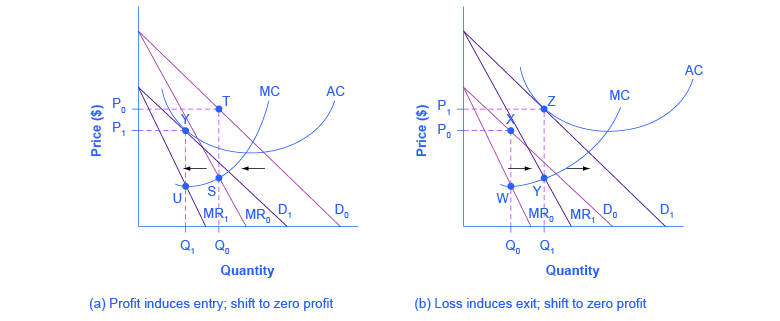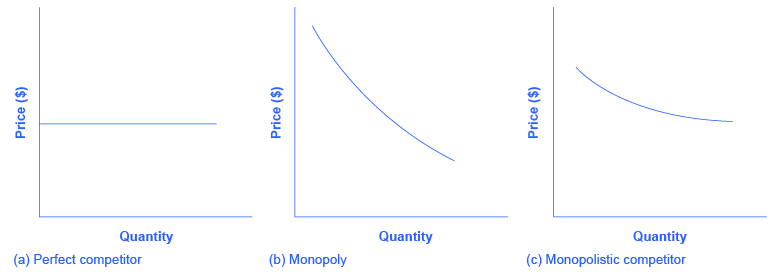AQA Specification focus:
‘The main characteristics of monopolistically competitive markets.’
Introduction
Monopolistic competition represents a middle ground between perfect competition and monopoly, combining elements of both. It involves many firms, differentiated products, and relatively free market entry.
Characteristics of Monopolistic Competition
Large Number of Firms
A key assumption is the presence of many small firms, each holding only a small share of the total market. No single firm has enough power to dominate.
Each firm is a price maker but within narrow limits.
Firms must consider rivals’ responses but face weaker interdependence than in oligopoly.
Product Differentiation
Unlike perfect competition, products are not identical. Firms compete by offering differentiated products that are close but not perfect substitutes.

High-resolution photograph of a supermarket cereal aisle with numerous brands and variants of a similar product. It exemplifies many firms and differentiation—hallmarks of monopolistic competition at the consumer level. The photo shows variety without clutter, aligning with the syllabus focus on characteristics rather than analysis. Source
Product Differentiation: The process by which firms make their products distinct through branding, quality, design, or other features, while still meeting the same basic need.
Differentiation may be real (better quality materials) or perceived (branding, advertising).
This allows firms to gain some monopoly power, as consumers may prefer one brand even if alternatives exist.
Freedom of Entry and Exit
In monopolistically competitive markets, there are low barriers to entry and exit.

Two-panel diagram showing entry shifting a firm’s demand left toward zero economic profit, and exit reversing the process. This supports the free-entry/exit assumption tied to long-run normal profit. Note: the figure also includes MR, MC and AC curves, which go beyond this subsubtopic’s characteristics but are included solely to visualise the entry–exit mechanism described. Source
New firms can enter if profits are being made.
Firms can leave if they are making persistent losses.
This ensures normal profits in the long run, as entry erodes supernormal profits.
Imperfect Knowledge
Unlike perfect competition, buyers and sellers do not possess perfect knowledge of all prices and products.
Consumers may remain loyal to brands due to limited awareness of alternatives.
Firms can use advertising to exploit this gap.
Assumptions Underlying Monopolistic Competition
Short-Run vs Long-Run Profitability
In the short run, firms may achieve supernormal profits due to product differentiation and brand loyalty.
Advertising, customer service, or product innovation can support this.
Firms may behave like small monopolists in their niche markets.
In the long run, however, the assumption of free entry means:
New competitors are attracted by abnormal profits.
Increased supply shifts demand for existing firms’ products downwards.
Firms end up earning only normal profit.
Independent Decision-Making
Each firm acts independently when making pricing and output decisions.
Unlike oligopoly, there is no explicit collusion.
The market is too fragmented for cooperative strategies.
Elastic Demand for Products
Because many substitutes exist, the demand curve faced by each firm is relatively elastic.

Figure comparing demand curves for a perfect competitor (horizontal), monopolist (steep downward slope), and monopolistic competitor (downward-sloping but relatively elastic). It visualises why monopolistic competitors are price makers within limits—retaining some market power, yet facing many substitutes. Clean axes and labels support quick comparison across market structures. Source
Elastic Demand: When a change in price leads to a proportionally larger change in the quantity demanded.
Firms can raise prices slightly, but significant increases will drive customers to rivals.
Differentiation reduces but does not eliminate price sensitivity.
Key Features Summarised
Many firms with small market shares.
Differentiated products that are close substitutes.
Low barriers to entry and exit.
Imperfect knowledge among consumers and producers.
Firms act independently, without collusion.
Short-run supernormal profits, but normal profit in the long run.
Relatively elastic demand curves due to availability of substitutes.
Implications of Monopolistic Competition
Role of Non-Price Competition
Firms rely heavily on non-price competition to attract and retain customers.
Advertising and branding.
Customer service and reputation.
Product features and packaging.
This creates brand loyalty and provides firms with some market power.
Efficiency Considerations
While consumers benefit from variety and choice, monopolistic competition has implications for efficiency:
Firms may not produce at the lowest possible average cost (productive inefficiency).
Price is typically above marginal cost, meaning allocative inefficiency.
However, the presence of innovation and product diversity may enhance dynamic efficiency in the short run.
Comparison to Other Market Structures
More competitive than monopoly but less so than perfect competition.
Unlike oligopoly, firms in monopolistic competition face less interdependence and uncertainty.
Provides a balance of consumer choice and competition, though not perfectly efficient.
FAQ
Advertising is central to product differentiation in monopolistic competition. Firms use it to create brand loyalty, highlight unique features, and reduce the perceived closeness of substitutes.
This allows businesses to charge slightly higher prices than competitors without losing all customers. Heavy reliance on advertising can, however, increase costs and reduce overall efficiency.
Monopolistic competition offers a wide variety of products, each slightly different in style, branding, or quality.
Consumers benefit from greater choice than in perfect competition, where products are identical.
Unlike monopoly, consumers are not restricted to one firm’s offering.
This balance makes the structure attractive for markets where variety is valued, such as food, clothing, or retail.
Brand loyalty allows firms to maintain some pricing power despite the availability of substitutes. Loyal customers are less sensitive to price changes, giving firms short-term monopoly-like advantages.
Over time, however, entry of new firms erodes this power, but strong branding can help delay the transition to normal profits.
It is most visible in industries with many small to medium-sized firms offering differentiated products.
Examples include:
Restaurants and cafés.
Clothing retailers.
Hairdressers and salons.
Local service providers.
These markets share features of low entry barriers and a focus on differentiation through style, quality, or service.
Firms often innovate to stand out in a crowded market. This may involve improving product quality, packaging, or service delivery.
Unlike oligopoly, where large-scale R&D is common, innovation here tends to be smaller-scale but frequent. The aim is to capture consumer attention and maintain differentiation rather than achieve major technological breakthroughs.
Practice Questions
State two characteristics of a monopolistically competitive market. (2 marks)
1 mark for each correct characteristic (any two).
Acceptable answers include:
Large number of small firms.
Differentiated products.
Freedom of entry and exit.
Imperfect knowledge among consumers and producers.
Firms act independently.
Explain why firms in monopolistically competitive markets are able to earn supernormal profits in the short run but only normal profits in the long run. (6 marks)
Up to 2 marks for recognising short-run conditions:
Firms can differentiate their products and build brand loyalty (1 mark).
This allows them to charge higher prices and earn supernormal profits (1 mark).
Up to 2 marks for recognising long-run conditions:
Low barriers to entry encourage new firms to join the market if supernormal profits exist (1 mark).
Entry of new firms reduces demand for existing firms’ products until only normal profit remains (1 mark).
Up to 2 marks for clarity and development:
Reference to the concept of normal profit in the long run (1 mark).
Clear explanation of the role of competition eroding abnormal profits (1 mark).
Maximum 6 marks.

